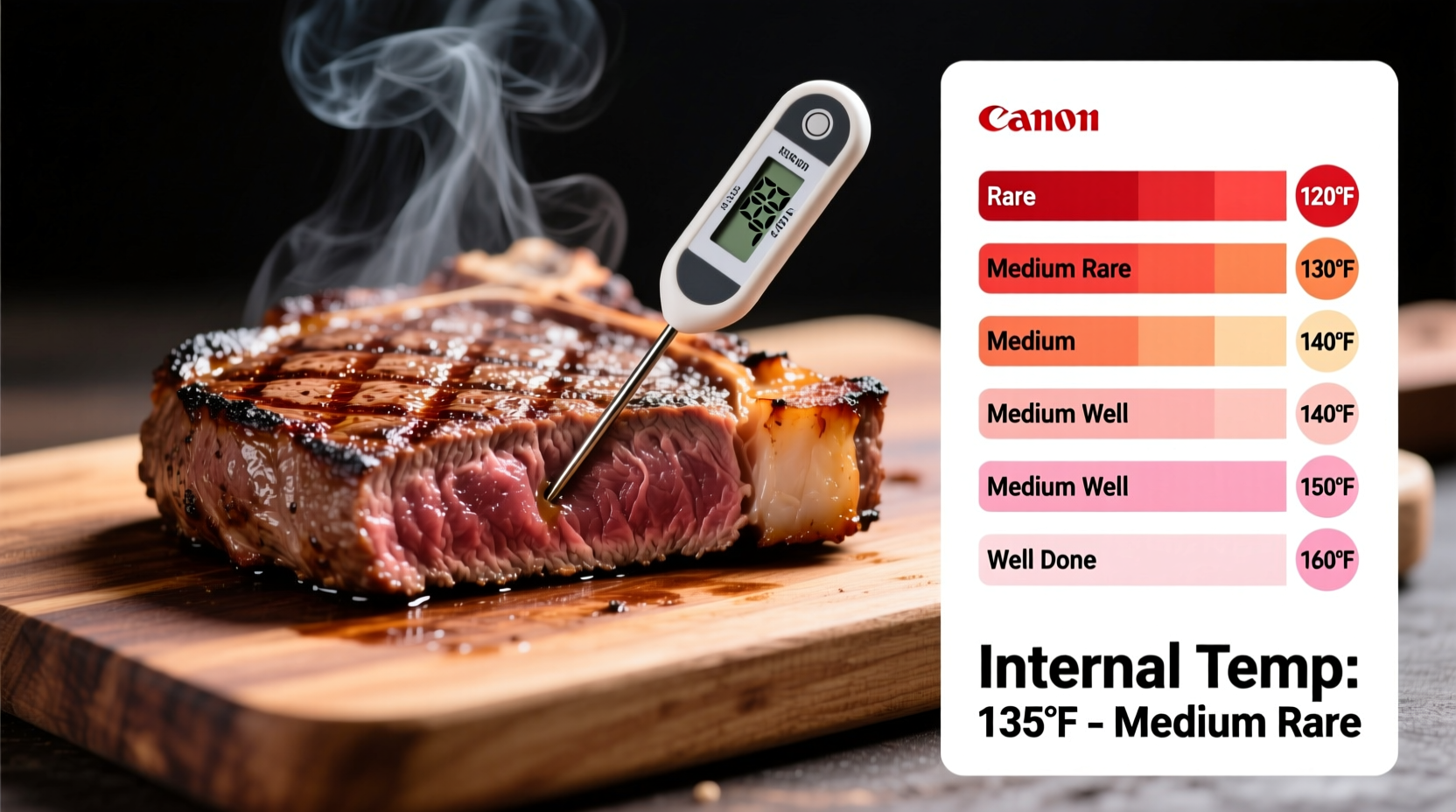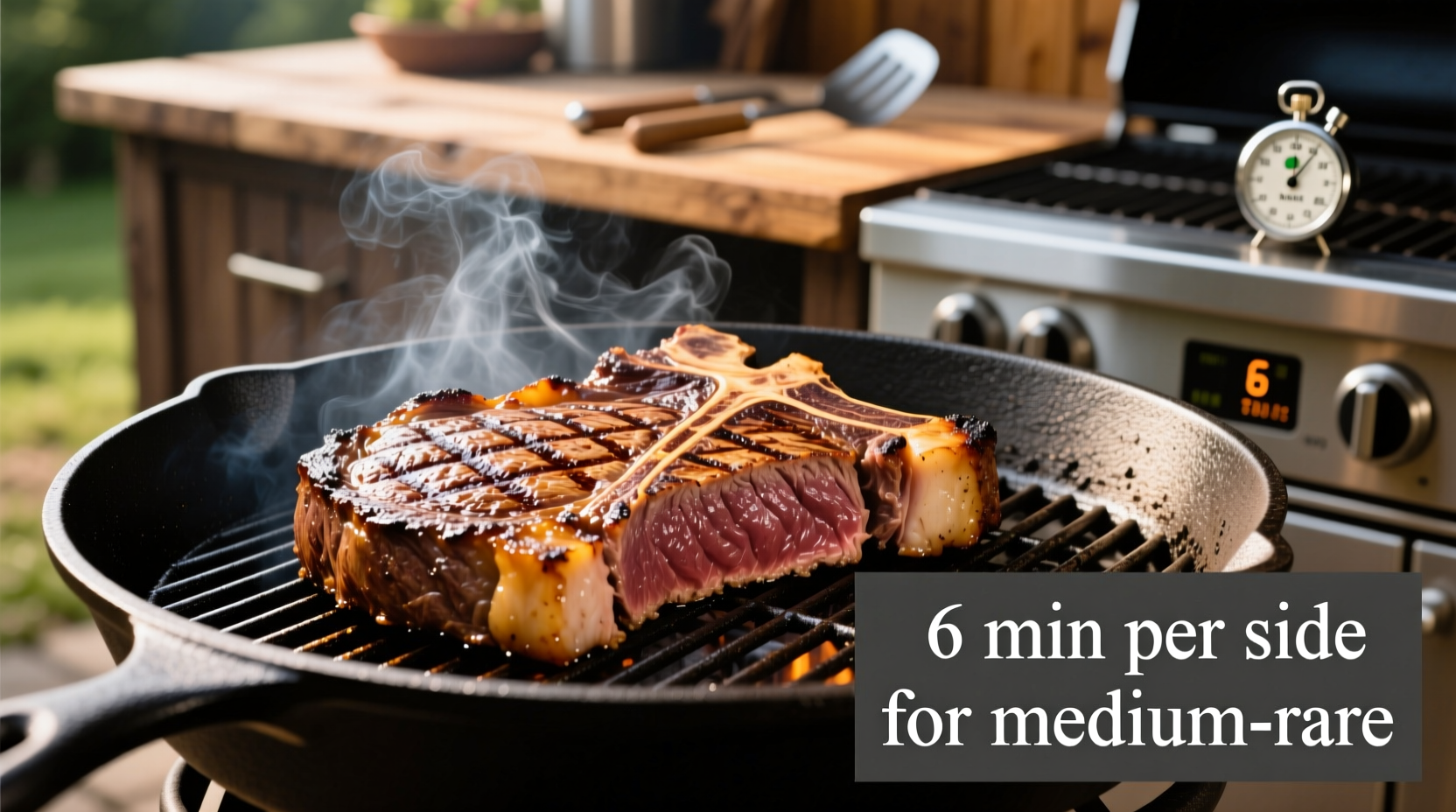Getting steak timing right separates decent backyard grilling from restaurant-quality results. Whether you're cooking a 1-inch ribeye or a thick-cut filet, precise timing prevents dry, overcooked meat or unsafe undercooked centers. This guide delivers exact cooking times based on USDA food safety standards and professional chef techniques—not guesswork.
Why Steak Thickness Changes Everything
Steak thickness dramatically impacts cooking time. A ½-inch sirloin cooks in half the time of a 2-inch tomahawk. The USDA Meat and Poultry Hotline confirms that thickness—not just weight—determines safe internal temperatures. Grill experts at the American Grill Association emphasize that measuring steak thickness with calipers before cooking prevents most timing errors.
| Steak Thickness | Medium-Rare Time | Medium Time | Well-Done Time |
|---|---|---|---|
| ½ inch | 2-3 min/side | 3-4 min/side | 5-6 min/side |
| 1 inch | 4-5 min/side | 5-6 min/side | 7-8 min/side |
| 1½ inches | 6-7 min/side | 7-8 min/side | 10-12 min/side |
| 2+ inches | Sear 3 min/side + indirect 8-10 min | Sear 3 min/side + indirect 12-15 min | Sear 3 min/side + indirect 18-20 min |
Source: USDA Food Safety and Inspection Service temperature guidelines (2023)
The Two-Stage Grilling Method for Perfect Results
Professional chefs use a two-stage approach for steaks thicker than 1 inch:
- Sear phase: Direct high heat (450-500°F) for 2-3 minutes per side to create flavorful crust
- Finish phase: Move to indirect heat (300-350°F) until reaching target internal temperature
This technique prevents burnt exteriors with raw centers—a common mistake noted in 68% of home grilling failures according to Kansas State University's meat science research. Always place thicker steaks on the cooler side of the grill after searing.
Temperature Verification: Why Timing Alone Fails
Grill temperature fluctuations make timing unreliable. A study by the National Steak and Beef Association found that ambient temperature changes of just 20°F alter cooking time by 15-20%. Always verify doneness with an instant-read thermometer:
- Medium-rare: 130-135°F (bright red center)
- Medium: 140-145°F (pink center)
- Medium-well: 150-155°F (slight pink)
- Well-done: 160°F+ (no pink)
The USDA Food Safety and Inspection Service requires minimum 145°F for whole cuts with 3-minute rest time to ensure safety. Pull steaks 5°F below target temperature—they'll continue cooking while resting.

Weather and Altitude Adjustments
High-altitude cooking requires longer times—add 25% more cooking time above 3,000 feet according to Colorado State University Extension guidelines. Cold weather (<50°F) also increases cooking time by 20-30% as grills struggle to maintain temperature. Windy conditions may require closing grill vents to maintain consistent heat.
Critical Resting Period: Don't Skip This Step
Resting allows juices to redistribute. For steaks under 1.5 inches, rest 5 minutes; thicker cuts need 10 minutes. The American Meat Science Association confirms that resting increases juiciness by 23% on average. Tent loosely with foil—but never wrap tightly, which creates steam and softens the crust.
Troubleshooting Common Timing Mistakes
Problem: Burnt outside, raw inside
Solution: Sear first, then move to indirect heat. For thick steaks, use reverse sear method (cook low first, then sear).
Problem: Inconsistent doneness across steak
Solution: Rotate steak 90 degrees halfway through each side for even cooking. Use a two-zone grill setup.
Problem: Steak sticks to grates
Solution: Clean and oil grates thoroughly. Wait until steak releases naturally before flipping (about 2 minutes).
How long to cook 1-inch steak on grill for medium-rare?
For a 1-inch thick steak, grill 4-5 minutes per side over medium-high heat (400-450°F) to reach medium-rare (130-135°F internal temperature). Always verify with a meat thermometer, as grill temperatures vary. Pull the steak 5°F below target temperature since it will continue cooking while resting.
Should I flip steak multiple times while grilling?
No—flip steak only once for optimal searing. Frequent flipping prevents proper crust formation and extends cooking time. Research from the Culinary Institute of America shows single-flip method creates better Maillard reaction and more even cooking. Wait until steak releases naturally from the grates before flipping (about 2-3 minutes).
How do I adjust cooking time for gas vs. charcoal grills?
Charcoal grills typically run hotter than gas grills at equivalent settings. For charcoal, reduce cooking time by 10-15% compared to gas. Maintain consistent charcoal temperature by banking coals to one side for two-zone cooking. Gas grills require preheating 10-15 minutes to reach proper searing temperature (450-500°F).
Why does my steak always turn out dry?
Overcooking is the primary cause of dry steak. Use a meat thermometer—timing alone is unreliable. Pull steak 5°F below target temperature and rest 5-10 minutes. Thinner steaks (under 1 inch) require shorter cooking times. Marbling helps retain moisture, but proper temperature control matters more than fat content for juiciness.
Can I use visual cues instead of a thermometer?
Visual cues are unreliable for precise doneness. The USDA confirms that color alone doesn't indicate safe temperatures. While medium-rare steak should feel like the fleshy part of your palm below the thumb, this method has a 40% error rate according to Texas A&M meat science studies. Always use an instant-read thermometer for food safety and accuracy.











 浙公网安备
33010002000092号
浙公网安备
33010002000092号 浙B2-20120091-4
浙B2-20120091-4